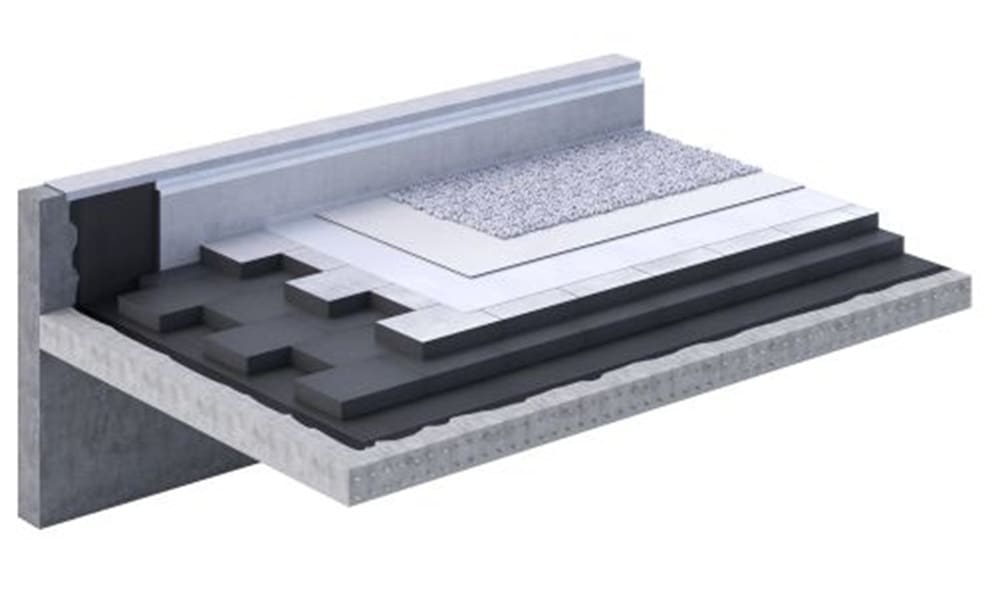Download our White Paper, titled “Cellular Glass Insulation as a Non-combustible Solution for Inverted Roofs,” for an in-depth analysis of the benefits and technical specifications of FOAMGLAS® INVATHERM™
Our White Paper, titled Cellular Glass Insulation as a Non-combustible Solution for Inverted Roofs, provides an in-depth analysis of the benefits and technical specifications of FOAMGLAS® INVATHERM™.
Key sections:
• Flat roofs: Inverted roofs vs warm roofs: Compares the characteristics and advantages of inverted roofs versus warm roofs, and installation methods.
• Inverted roof applications: It examinates the importance of thermal efficiency, waterproofing, drainage, fire safety, mechanical support and loadbearing capacity in achieving optimal performance of flat roofs.
• Cellular glass insulation: Explains what cellular glass insulation is, its properties and why it is a fire-safe alternative to traditional combustible insulation materials. It also details the specific benefits of FOAMGLAS® INVATHERM™ for inverted roofs.
• Technical information: Provides detailed technical guidelines for the installation and maintenance of FOAMGLAS® INVATHERM™, including details of single- and double layer systems, U-value calculations and alignment with British Standards.
• Summary: Concludes with a solid overview of FOAMGLAS® INVATHERM™ as an ideal solution for inverted roofs, addressing fire safety considerations and long-term performance.
Advantages of inverted roofs
• Early waterproofing: Inverted roofs allow for early waterproofing, ensuring the building becomes watertight sooner in the construction process.
• Protection from climatic conditions: The waterproofing membrane is shielded by the insulation, protecting it against thermal shock, mechanical damage, and UV radiation.
• Environmental considerations: Inverted roofs may reduce waste and energy consumption. The loose-laid insulation and finishes allow for easier reuse, minimising waste generation during construction and demolition phases. (White Paper p. 7)
• Stormwater management: An inverted ballast or green roof construction can help mitigate stormwater runoff by absorbing rainwater and reducing overflow into sewage systems. (White Paper p. 7) Choosing the right insulation material is crucial for long-term durability and compliance with building regulations.

Enhanced fire safety in inverted roofs
FOAMGLAS® inverted roof insulation is Euroclass A1 rated and suitable for terraces, podiums, green roofs and more. It offers exceptional non-combustibility, making it a fire-resistant choice for various applications. FOAMGLAS® INVATHERM™, as part of the inverted roof system, consists of cellular glass with a pre-applied inorganic coating on the upper surface.
Both the core material and the coating have an A1 fire reaction classification, ensuring that the insulation does not burn, distort, produce flaming droplets or contribute to smoke production.
University project highlight
At Manchester Metropolitan University, the Science & Engineering Building stands as a testament to cutting-edge design and energy efficiency.
This complex project required an efficient, non-combustible and durable inverted roof solution that would provide optimal energy efficiency while withstanding the rigours of the Manchester climate.
The design goal was clear: to create an inverted roof system that would enhance thermal performance, contribute to fire safety and meet the overall objectives of the building.
Investing in the future
FOAMGLAS® inverted roof insulation offers a smart solution while contributing to the long-term performance of the roof. This insulation material is made of cellular glass and contains graded recycled glass (White Paper p. 8). By incorporating recycled materials, it reduces environmental impact and contributes to a circular economy.
By choosing a FOAMGLAS® solution, you benefit from durable roofs that help protect your buildings and aspire for a more sustainable future.
To find out more, the corresponding White Paper can be downloaded on the FOAMGLAS® website.
*Technical documents and assessments, White Paper, installations guidelines or certificates can be downloaded here.
**Please note that this is a commercial profile.













